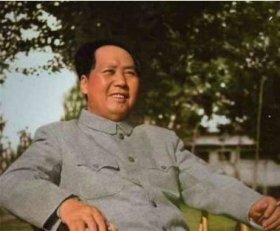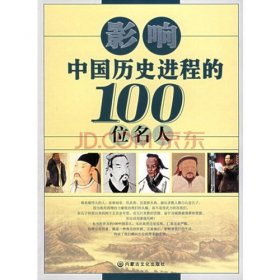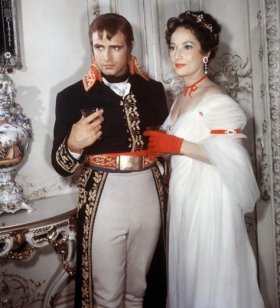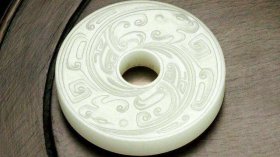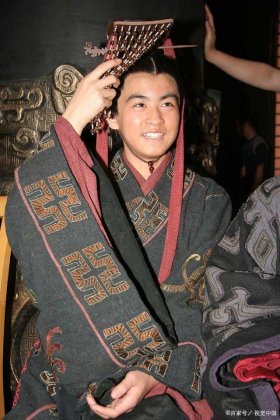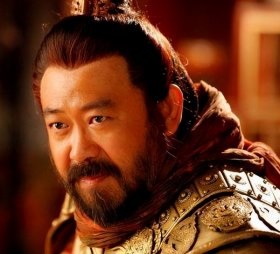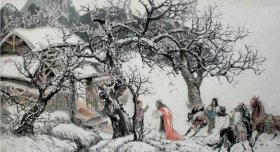shanghai-黄潮興:A Ritual… without Meat?
-
shanghai

- 中国历史故事-小虎历史故事网
- 2023-09-01 14:48
- 小虎历史故事网
shanghai-黄潮興:A Ritual… without Meat? ,对于想了解历史故事的朋友们来说,shanghai-黄潮興:A Ritual… without Meat?是一个非常想了解的问题,下面小编就带领大家看看这个问题。
原文标题:黄潮興:A Ritual… without Meat?
A Ritual… without Meat?
(首發)
Teo Heng Ng(黃潮興)
新加坡
- On “Wuti zhi li” (lit. ritual without body)(無體之禮) apropos of the “Min zhi fumu” (lit. parents of the people)(民之父母) chapter in Shanghai Museum’s collection of Warring States Chu Bamboo Manuscripts (Shangbo guancang zhanguo chu zhushu)(上博館藏戰國楚竹書)
I shall begin my discussion with an interesting pseudo-philological observation. [1]Amongst the excavated Chu Bamboo scripts acquired at the fin-de-siècle of the twentieth century[2], one of the fragmentary chapters – min zhi fumu – has the following line attributed to Confucius:
亡聖之樂,亡(月+li)之豊,亡備之喪,君子以此皇於天下。
Scholars render it into the following:
無聲之樂,無體之禮,無服之喪,君子以此横於天下。
Apropos of the underlined phrase, note how the second and fourth character is being read. In the Warring States period, it is not uncommon that the character ti is written with the radical rou, though lexicon erstwhile has yet to show li rendered without the radical shi (示). [3] Li without the radical signifies the “utensils used in conducting a ritual (li)”[4], and it is being used here legitimately as a synecdoche. I agree with such a reading. Nevertheless, one’s imagination is being provoked by the phrase in it’s original form: a ritual in the absence of offering or, graphically, without meat. By a close reading of the proposition and an extrapolation of its historical context, one understands the proposition as championing for the king to manifest the supra-formal spirit of the ritual. Yet, a semantic analysis of the concept of ti in the proposition also shows that the ultimate significance lies not so much in doing away with all the formal details than to strike a balance between the ritualistic embellishments and the spirit that underpins it.
Let us first situate the proposition in its wider context. “Min zhi fumu” features a vignette of dialogical exchange between Confucius and his disciple Zixia (子夏) which set forth to discuss how the benign king (愷悌君子), that is, the parent of the citizens, should rule. Confucius’ reply is that the ruler should
…reach the source of the rites and music, so as to accomplish the “five ultimates”, and carry out the “three nothingness”, so as to enable the benign rule to reach every corners of the world.
民(之)父母虖,必達於禮樂之原,以至(致)五至,以行三無,以皇(横)於天下
The “three nothingness/withouts” include: music without tones, ritual without forms, and the act of mourning without the proper attire, as have been listed in my first p
中国历史林姓人物事迹故事
aragraph. The significance of the text rests on the very fact that similar accounts can be found in the “Kongzi xianju” (孔子閑居) chapter in Liji (禮記), and the “Lun Li” (論禮) chapter in Kongzi jiayu (孔子家語). Traditionally, classical scholars questioned the pedigree of this particular chapter by charging that it was an intended fabrication by the Confucian scholars in the Han dynasty, reason being that the predilection in using numbers to categorize concepts was a characteristic of these latter age scholars.[5] Thus, that the same account was already in circulation in the Warring States period is a discovery nothing less than momentous.[6]Though it is not a latter-age appurtenance to Liji created by scholars influenced by the ideas of numerology, one cannot avoid noticing the influence of the Laozi’s mode of thinking here. The glaring evidence of both the adaptation of the similar saying widely accorded to Laozi - dayin xisheng (大音希聲) being adapted into wusheng zhiyue – and the categorical significance of “nothingness” would have prompted readers to deem it patently Daoist, almost reflexively. Yet, with the high degree of fluidity amongst different enunciative modes circa the Warring States, thinkers were in the process of constantly becoming, and thus assimilating other modes of thoughts into their own “system” (for a lack of a better word) would not be unimaginable. This why I choose to recognize the proposition as an attempted amalgamation of the Confucian ritual ideal with Laozi’s thinking. Nevertheless, I am not interested in adjudicating whether it is a Confucian-based scholar predicating rituals on Laozi’s terms, or a Daoist-prone scholar broadening the inclusivity of Laozi’s agenda to include rituals and funereal rites. What I am more interested is its significance in the delineation and elaboration of the ideal ruler ship.
How then should the king conduct rituals, according to “Confucius”? The ensuing conversation sees Zixia probing for more details, especially so in requesting the Master to draw inferences from the Book of Odes for each of the “nothingness”. For the “ritual without form” proposition, Confucius’ quote is:
威儀棣棣,不可選也。
According to Mao’s annotation, this line should be understood as “ the regal countenance exudes in plenitude, with high mastery, such that it cannot be measured”[7]. Confucius furthers his claim by stating that the attainment of non-formal ritual should be “progressively achieved” (日逑(就)月相(將)) , its effect would pervade everywhere in the jurisdiction of the king (塞於四海) and it would bring harmony to all strata of the society (上下禾(和)同). If we understand the way of the king to be such that he should govern “all lands under heaven” and “all the people in the land” (普天之下,莫非王土;率土之賓,莫非王臣), one understands why the ideal king should rule by the two pivotal ideals of rites and music. Though Confucius never got into the details of defining intensionally the source of ritual and music[8], he contoured numerous aspects of its manifestation. The spirit of the rite shows forth in two aspects: first, an immediate encounter with the regalia is by itself a sublime experience (as the poem implies); second, the efficacy pervades the whole breadth of jurisdiction. Thus, if one understands the source of the rite as beyond any reification, and thus without limitations, by any formalistic details, one can choose to read the “ritual without
关于中国历史成语故事
forms” as the highest attainment by the king who embodies the ‘pure spirit’ of ritual. Put in another way, the highest manifestation of the ritual comes from returning to its source and displaying itself unmediated in spirit, thereby magnifying the “magical” quality of the ritual (to borrow Fingarette’s notion) and eventuating in far-reaching efficacy. (Fingarette : 1972 ) Also, to borrow Micea Eliade’s notion of the various manifestations of the sacred, the Confucian rex has the power to transform the realm into one distinguished with ritualistic civility. (Eliade : 1996 )Such a reading of the proposition remains incomplete without an understanding of the historical context in which it was advocated. Though we can choose not to ask whether Confucius really stated them, we cannot avoid the question of why the notion of “formal emptiness” of ritual is expounded as regal attainment par excellence. As this chapter resurfaces as a relatively independent text with regards to other acquired excavations (kongzi shilun, lubang dahan, rongcheng shi, etc), the only way in which we can appreciate its historical significance is to situate it within the oeuvre that is Liji[9] and seek for the relevant thematic resonance. Indeed, as a response to the Confucian proposition, other chapters in Liji discourage the overt fuss with ritualistic minutiae:
大樂必易,大禮必簡 (Liji: Liyun)
The Grand Music must be kept simple, the Big Ritual must be without unnecessary details.
《禮》之失,煩 (LJ: Chapter 26)
The failing of Li is its unnecessary details.
As a further corroboration to such an idea, it is also held that
凡
中国历史人物故事全书
禮之大體,體天地,法四時,則陰陽,順人情,故謂之禮 (LJ: Chapter 49)The main substance of ritual, is to embody heaven and earth, follow the way of the four seasons, abide by the principles of yin and yang, go along with human emotions, thus it can be called a ritual.
Thus, one infers that at the time such a proposition surfaced in history, the original spirit of rites and rituals was already lost in unnecessary pettiness. An ostentatious staging of any ritual or rite with make-believe significance and pretended sacredness affronted the decency of the scholar(s) who stood out to call for a “return to its source”. Unsurprisingly, the source of ritual, like music, displays itself in full potentiality as not being circumscribed by forms. Hence the call for no “body” (ti).
Finally, what is interesting comes from the semantic ambivalence of the concept of ti (體). To juxtapose the proposition together with the call for non-tonal music and non-attire mourning makes one understand ti to be a metaphor for the form, hence allowing for the bipolar tension of form v. spirit, as our reading so far has shown. Exegetically wise, ti does refer to the limbs when the subject is the human body [10];or to the outer form when the subject is non-human[11]. What is intriguing on the other hand is, the concept of li has also been also defined as ti itself:
《禮記~禮器》禮也者.猶體也.體不備.君子謂之不成人
Liji Liqi chapter: Ritual is like the human body. If the body is not complete, the gentleman deems him as a yet-to-be human.
How should we understand this semantic paradox? On the one hand, one voice calls for the attainment of the supra-formal ritual manifestation; yet on the other hand, another voice claims that without the form, a rite will be a human without limbs, and such a person can yet be deemed a complete human. In other words, if we take the chapter as a separate document, the paradox ceases; but if we were to read it within the oeuvre, we have to account for the seeming contradiction between different instances. Furthermore, if Liji was progressively complied since Warring States to Han, there is reason to hypothesize that the ambivalence is not so much a textual anomaly. Rather it reflects a much wider societal/intellectual phenomenon.
My reading is to understand the ambivalence of ti as {form, body, to embody, and ritual (li) itself} as enriching the semantic and pragmatic realm of li. Through this, I understand the perfect ritual as accomplishing a dynamic equilibrium between its form and its spirit. After all, an advocacy for supra-formality must not be confused with the call for anti-formality. If another pair of cardinal terms must be raised, then it is the belief that the “middle” (中) is also the “ultimate” (極)[12]. The ritual mediates between the quotidianus and the sacer, and if its effect is to be omnipresent it must also be presentable in commonplace affairs. In other words, its principle/spirit is universal. The king embodies and manifests the spirit, unbounded by limitations. Yet, it manifests through different entities in the world, it is intra mundo rather than extra mundo. The ethico-religious significance therefore, when read as a keynote address to the king, is the call to maintain the balance between phenomenological manifestations of forms (ti) and the spirit it is supposed to embody (ti).
So should we have our meat for the ritual, or should we not? Rather than seeing this as a irreconcilable paradox, I choose to understand it as a call for both transcending formal pettiness and knowing how to incorporate the necessary (manifested) details or forms. For the king, he must first return to the source of this ideal through consistent and conscientious self-effort, and in so doing exudes the pure potency. Think of this as the first period of the Buddha’s enlightenment, the Avatamsaka stage, in which His spirit surges forth unmediated, according to Zhiyi (智顗). To proceed from this is to make the august ideal applicable to the world. For if civility can be attained by ritualistic principles, one must allow for such principles to express itself through various reifications of specific rituals, and in specific rituals through specific details. The puissance of a rite lies beyond the meat definitely, yet at the same time, some meat is necessary. Though not too much.
Bibliography
1. Ma, Chengyuan. 2001. Vol. 1 – Shanghai bowuguan cang zhanguo
中国历史励志小故事简短
chu zhushu (上海博物馆藏战国楚竹书(一)), Shanghai guji chubanshe. 20012. Ma, Chengyuan. 2002. Vol. 2 – Shanghai bowuguan cang zhanguo chu zhushu (上海博物馆藏战国楚竹书(二)), Shanghai guji chubanshe. 2001
3. Zhu, Runqing; Liao, Mingchun ed. 2002 Shangboguan cang zhanguo chu zhushu yanjiu (上博馆藏战国楚竹书研究), Shanghai shudian chubanshe, 2002
4. Zhu, Runqing; Liao, Mingchun ed. 2004 Shangboguan cang zhanguo chu zhushu yanjiu xubian (上博馆藏战国楚竹书研究续编), Shanghai shudian chubanshe, 2004
5. Ma, Ruichen (Qing Dynasty) 1989 ed. Maoshi zhuanjian tongshi (毛詩傳箋通釋), Beijing: Zhonghua shuju
6. Chen, Huan (Qing Dynasty) 1984 ed. Shi maoshi zhuanshu (詩毛氏傳疏), Beijing: Xinhua shudian
7. Qian, Mu, 2001 ed. Guoxue gailun (国学概论), Taiwan: Lantai chubanshe, 2001
8. Fingarette, Herbert. 1972 . Confucius – The Secular as Sacred. Harper Torchbooks
9. Eliade, Mircea. 1996 reprinted. Patterns in Comparative Religions. University of Nebraska Press
10. Tang, Yuhui (湯餘惠) ed. 2001. Zhanguo wenzi bian (戰國文字編), Fujian renmin chubanshe, 2001
[1] All translations below are my own.
[2] According to the then curator of the Shanghai museum Ma Chengyuan (馬承源), there is a claim that the acquired materials are from the same source as the earlier acquired Guodian materials, though evidence remains inconclusive. The only exact claim in dating is the Shanghai manuscripts are part of the sacrificial paraphernalia of tomb sacrifice of an aristocrat of Chu before the state moved its capital to Ying (郢). Refer to the preface in Vol. 1 – Shanghai bowuguan cang zhanguo chu zhushu (上海博物館藏戰國楚竹書(一)), Ma Chengyuan ed. Shanghai guji chubanshe. 2001. The “Min zhi fumu” chapter is to be found in Vol. 2, and the philological work is undertaken by Pu Maozuo (濮茅左). Also, the exact dating of the manuscripts render them to be around 261 + 65 years, which means that they were in circulation circa 255 B.C. Refer to the interview “Ma Chengyuan xiansheng tan shangbojian” (馬承源先生談上博簡) collected in Zhu Runqing (朱潤清), Liao Mingchun (廖名春) ed. Shangboguan cang zhanguo chu zhushu yanjiu (上博館藏戰國楚竹書研究), Shanghai shudian chubanshe, 2002.
[3] In the “Collectanea of Warring States Characters” (Zhanguo wenzi bian/戰國文字編), two other examples in showing similar renditions of ti are: 雲夢-日乙246,郭店-窮達10; on the other hand, all examples of li are written with the radical shi. Tang Yuhui (湯餘惠) ed. Fujian renmin chubanshe, 2001.
[4] A Shuowen jiezi (說文解字) definition.
[5] Refer to Hang Shijun (杭世駿) Xu liji jishuo (續禮記集說), quoted by Fang Xudong’s (方旭東) Shangbo jian “min zhi fumu” pian lunxi (上博簡《民之父母》篇論析), Zhu Runqing (朱潤清), Liao Mingchun (廖名春) ed. Shangboguan cang zhanguo chu zhushu yanjiu xubian (上博館藏戰國楚竹書研究續編) (referred henceforth as XB), pp 275, Shanghai shudian chubanshe, 2004.
[6] Pang Pu (龐樸) claimed that the chapter pre-dates the text of Mencius. Refer to his Xidu “Wuzhi sanwu” (喜讀“五至三無”) in XB.
[7] Refer to Ma Ruichen (馬瑞辰) (Qing Dynasty) Maoshi zhuanjian tongshi (毛詩傳箋通釋), Beijing: Zhonghua shuju 1989 and Chen Huan (陳奐) (Qing Dynasty) Shi maoshi zhuanshu (詩毛氏傳疏), Beijing: Xinhua shudian 1984. “xuan” (選) is read as “suan” (算).
[8] More details are to be found in the Fang Xudong’s article in footnote 4.
[9] Though one can also read it in the whole context of Kongzi jiayu, my choice is a more convenient one for various reasons of which is the fact that the primary concern of Liji, being ritual, is more suited for us to extrapolate any extra-documental significance from the excavated text.
[10] Book of Odes Xiangshu (相鼠) Poem, “Human with no four limbs (ti)” (人而无體-according to Mao’s annotation)
[11] Book of Odes Xingwei (行葦) Poem, “When it starts to bud, and to form its body (ti)” (方苞方體-according to Zheng Xuan’s annotation)
[12] One classic example would be found in the Book of Documents “Grand Plan” (洪範) Chapter in which ji is annotated as zhong by Kong Anguo. Other examples can be found in the Book of Odes “Meng” (氓), “Yuanyoutao” (園有桃), Mao’s commentary.
点击下载附件:

shanghai-黄潮興:A Ritual… without Meat?
原文出处:http://his.newdu.com/a/201711/05/512184.html
以上是关于shanghai-黄潮興:A Ritual… without Meat?的介绍,希望对想了解历史故事的朋友们有所帮助。
本文标题:shanghai-黄潮興:A Ritual… without Meat?;本文链接:http://gazx.sd.cn/zggs/28432.html。
上一篇:考古-陳新:說“毋咎毋恙”
下一篇:考古-何家興:“舉國”戟的發現
猜你喜欢
- shanghai-王敏:上海何去何从?—论南京国民政府初期英美的“上海问题”政策 2023-09-18
